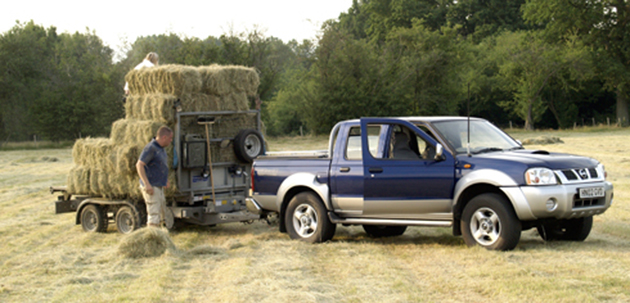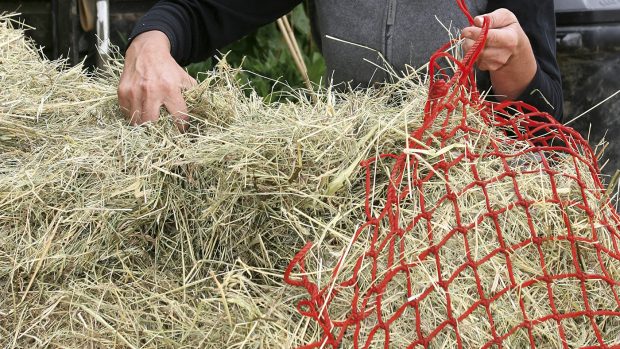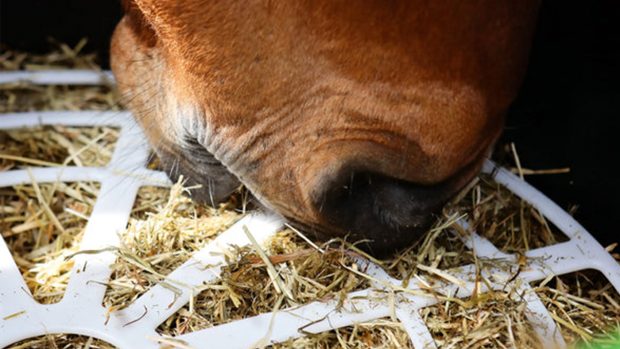If you are struggling with the rising costs of buying in hay — and questioning its quality — it is worth investigating how to make hay on your own land. The philosophy here is the same as with good home-made food — if you grow your own hay, you know exactly what you’re feeding your horse.
Warwickshire farmer Richard Wakeham explains: “You may save a small amount of money by making it yourself, but it is more about the implications of knowing your own ground.”
James Tugg, a smallholder in Oxfordshire who makes around 250 bales off two acres, agrees: “Supervising haymaking on your own land means that not only do you know what’s in it, but also that it’s been dried properly.”
Richard warns that farmers who are used to making hay for livestock are likely to turn it less often.
“The more often you turn hay the more likely it is to be dust free and less mouldy,” he says. “And this is something that you can dictate with a contractor.”
Employing a farmer
To avoid the responsibility, cost and logistics of hiring haymaking equipment yourself — and the time learning how to use it — there is the option of employing a farmer. You can find contractors who are happy to make hay from as little as one acre, but how much you can get off that is not clear-cut.
Hugh Goldsworthy, from Charton Manor Farm Contracts in Kent, estimates you could get 50-100 conventional small bales from an acre — but he reiterates that it’s “variable”.
Whether this is enough for your two horses will depend on for how much of the year they are kept in and what your remaining grazing is like. You will also need to make sure that you have sufficient grazing to last you through the summer, having set the haymaking field aside at the end of the winter.
The weather is key in hay making
Whether the field has been fertilised, what type of grass there is and how much rain there has been are all factors in determining your crop.
“Weather, weather, weather” is what the British Grassland Society (BGS) considers the biggest pitfall haymaking hopefuls should watch out for.
“If you only have a couple of acres, there is a chance you could lose it all,” says Richard. “Although it’s rare, I’ve lost complete fields off the back of an inaccurate weather forecast.”
However, James points out that, when you’re dealing with a smaller area, the whole process can be done faster, meaning you’re relying on a shorter window of good weather.
Weather depending, an afternoon in mid-June is the ideal time to have the hay cut, according to the BGS.
“June is when the grass is freshest and at the peak of its goodness,” adds Mike Stevens from Pedley Hill Haylage and Farm Contractors.
How to make hay: storage
Before committing to making hay on your land, realistically assess your storage situation. The ideal conditions are somewhere dry, free of rodents and protected from farm dust, according to the British Grassland Society (BGS). Andrew Delgado, who farms near Wimborne, Dorset, adds that it should be somewhere “nice and dark, with a bit of air”.
You can lose up to 30% of your crop through bad storage, Mike Stevens from Pedley Hill Contractors estimates.
The BGS adds: “Well-preserved hay can be judged by its colour — bright green or yellow — [will be] sweet in smell and absence of dust.”
It is crucial that you agree with your contactor before the process begins who will be stacking and storing the bales.
“I know of someone who had 800 bales made and was left to do the stacking himself,” warns James Tugg.
Is haylage a better option?
Nowhere to store hay? Haylage could be your answer:
- Plastic wrapping means it doesn’t need to be stored inside
- Assuming it’s made correctly, haylage has a higher nutritional value, meaning you will have to spend less on hard feed
- It is more palatable than hay, which means there is generally less wastage
- Because it can be baled quicker due to its increased moisture content, you are “weather-proofing your investment”, according to Warwickshire farmer Richard Wakeham. Mike Stevens from Pedley Hill Contractors adds: “Whereas hay can take seven days to make, haylage can be baled within three to four.”
However, poorly-made haylage can carry significant health risks to horses, including the toxin that causes botulism, which can be fatal to horses.
Equine nutrition expert Clare McLeod said: “It is crucial that haylage is kept airtight since this is key to avoid spoilage. Unlike silage, the grass in haylage is not preserved solely due to bacterial fermentation and the resulting acidity but depends on being airtight for its preservation. If air gets into a bale of haylage, the result will be heating of the forage from the growth of moulds and bacteria, which may be pathogenic (disease-causing).”
Eight layers of plastic wrap or more are recommended to ensure that haylage bales are not punctured – letting in air and therefore causing spoilage – during handling, transportation and storage. Some producers use up to 20 layers, especially on drier forages with stiffer stems.
Botulism is the term used to describe disease caused by the neurotoxin produced by clostridium botulinum bacteria. A very small amount of the toxin is fatal to horses.There is a risk of C botulinum poisoning in fermented wrapped forages, and big-bale hay, if the quality of either is poor. In well-preserved silage or haylage botulism is highly unlikely as the pH is too low (silage) and the water activity too low (haylage).
Botulism outbreaks in horses have been reported from feeding big-bale silage and haylage, and also hay and other feeds – but in most cases where the feed or forage was identified as a source of the neurotoxin, there was spoilage, carcass or soil contamination. Typically botulism from forage occurs from contamination with soil, animal carcasses or poultry slurry, or from rotting owing to poor quality wrapped forages not being preserved thoroughly, or hay not being stored correctly.
Good practice includes:
- Careful harvesting techniques to reduce the risk of contamination of the bales with soil, including grass cutting at 10cm or higher, taking care over raking, and not harvesting when the ground is wet and muddy
- Cutting the crop across the field to allow small mammals more chance to escape, thus reducing the risk of animal carcasses in the finished forage
- Wilting the forage for 36 to 48 hours before wrapping to ensure enough dry matter (low dry matter and high pH are a risk)
- Not using poultry slurry on pasture destined for haylage production, and avoiding harvesting after the application of any slurry
- Wrapping with sufficient layers of plastic to ensure an airtight seal
- Handling, storing and transporting with care to avoid puncture, and disposal of any punctured bales
- Prompt removal and replacement of any bales showing any spoilage immediately on opening, including moulding, unusual smell or any rotten areas
Like this? You might also enjoy reading these:
When is hay at its best? [H&H VIP]
5 common plants that could kill your horse
Understanding haylage production
Subscribe to Horse & Hound magazine today – and enjoy unlimited website access all year round
Horse & Hound magazine, out every Thursday, is packed with all the latest news and reports, as well as interviews, specials, nostalgia, vet and training advice. Find how you can enjoy the magazine delivered to your door every week, plus options to upgrade your subscription to access our online service that brings you breaking news and reports as well as other benefits.




